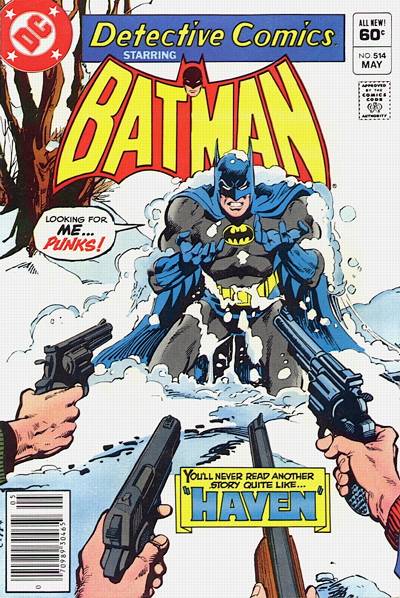He had great contemporaries in Irv Novick and Jim Aparo.
And he was followed by other luminaries, such as Marshall Rogers and Don Newton.
But if you asked folks to name the best Batman artist ever, Adams would likely top the list. His influence on the character is impossible to dismiss.
Adams' powerful, super-realistic art couldn't help but make an impact when he came on the comics scene in the late 1960s. He had a virtuosity and style all his own. And on Batman, especially, his presence was earthshaking.
The decision to hand Adams the reins to Batman was no mistake.
In the aftermath of the campy Batman TV series, and nearly 20 years of lightweight comics adventures that saw the Caped Crusader improbably visiting different planets, time periods and dimensions, editor Julie Schwartz wanted to make Batman a little more serious and real.
Writer Frank Robbins and artists Irv Novick and Bob Brown helped bring Batman a bit more down to earth, and then writer Denny O'Neil and Adams sealed the deal.
This pair stripped Batman to his essence. Gone were all the fancy vehicles and the bloated supporting cast. There was no more jetting off into space. Instead, this Batman was cast as an adventurer/detective facing earthbound challenges (with occasional ventures into the supernatural) armed with nothing but his wits.
Adams' art made it all work marvelously. His Batman was powerful and stealthy, driven, but also very human. He could express surprise, anger, sadness, humor. He could get hurt. He wasn't the grim, humorless, kevlar-armored, Bat Tank-driving Dark Knight of today, but an admirable, sympathetic figure crusading for justice (not vengeance).
The O'Neil-Adams team hit a peak with their multi-part Ra's Al Ghul "Daugher of the Demon" storyline, but also turned several wonderful single-issue stories during their run, too. In addition to their human take on Batman, I loved that O'Neil and Adams could turn out stories that weren't mired in or dependent on continuity or the wider DC audience.
Here's a look at some of Adams spectacular Batman art:

















































